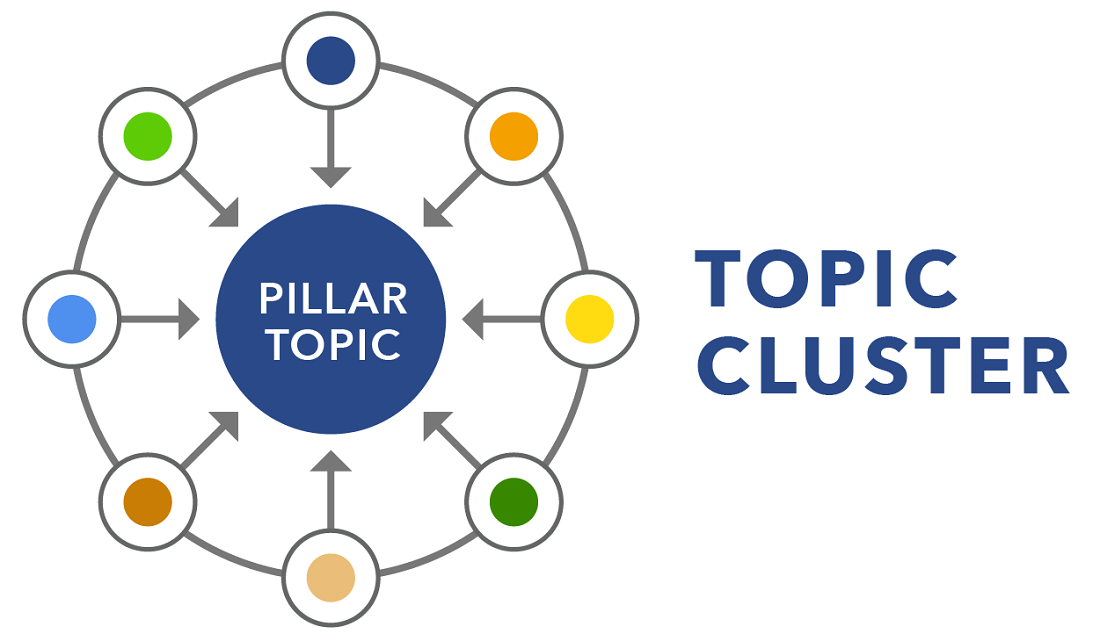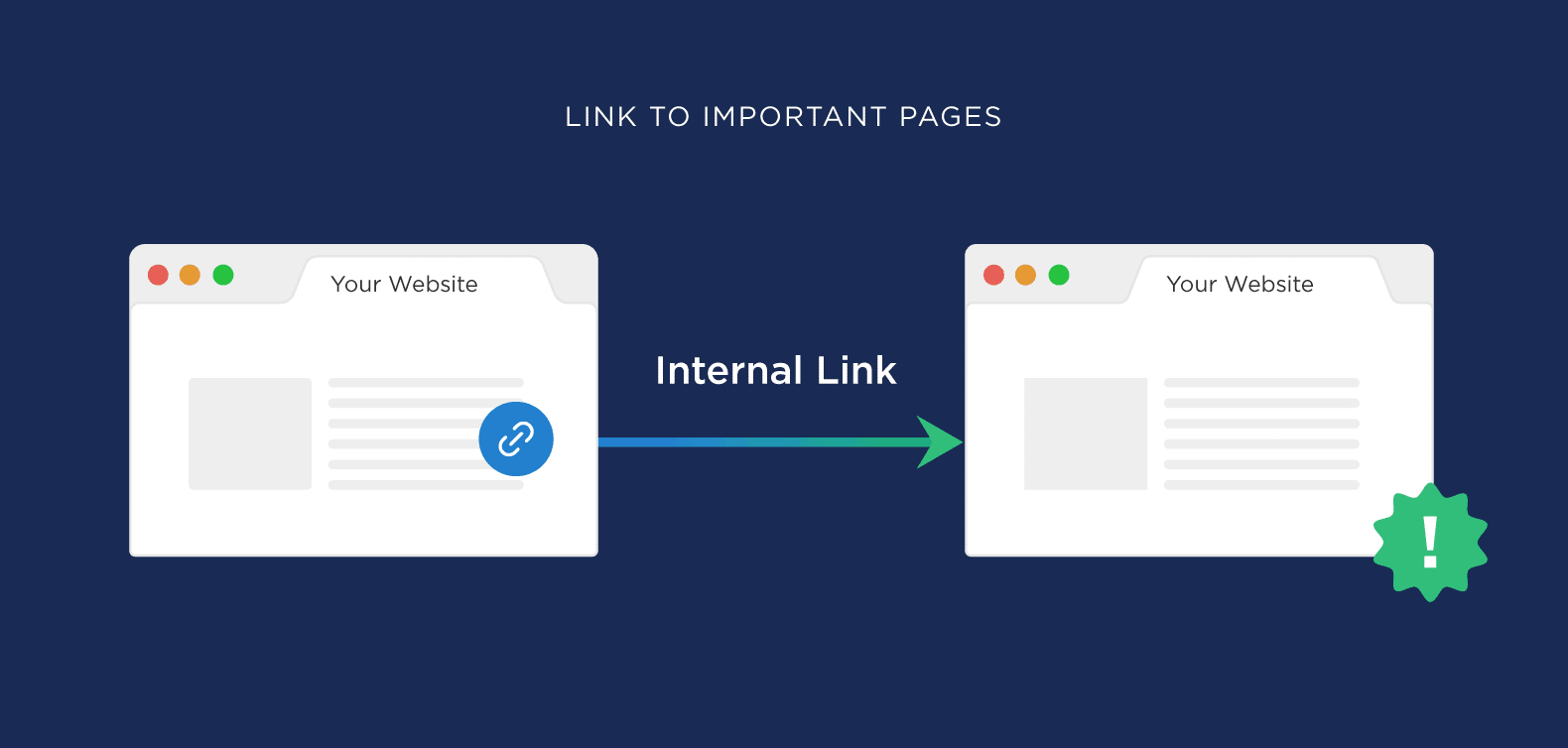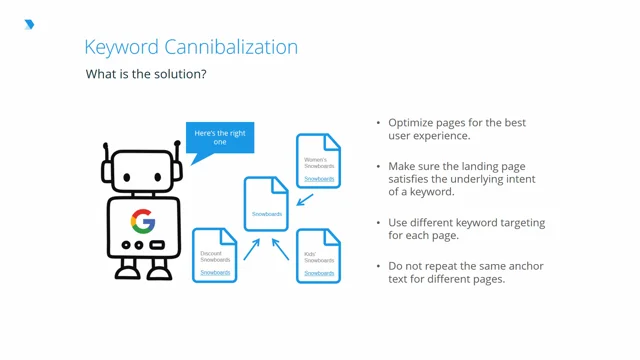8 min to read
Topic Clusters: The Key to Relevance and Specificity in Your Niche

Topic Clusters
Topic clusters are incredibly powerful in helping you carve out your niche, and could be your best weapon for your content marketing strategy. But what exactly are topic clusters? They're groups of related topics that all belong together because they describe some aspect of one more significant case.
By grouping related topics together, you can create a more specific and focused content strategy that will help you to attract and engage more readers. In addition, by using topic clusters, you can help to improve your SEO ranking, as Google favors websites that are more relevant and specific to a particular topic.
Topic clusters can be used in any niche, from business and marketing to travel and lifestyle.
CodeDesign is a leading digital marketing agency ranked #1 in Lisbon, Portugal. You could work with us to accelerate your business growth.
What Are Topic Clusters?
Topic clusters are groups of related blog posts organized around a specific topic.
A pillar page is a hub for all of the related topics that you have on your site. This will help you be more relevant and specific in your niche. When people come to your site, they'll want to find information on one topic, but they'll also be able to find information on other issues within the same category. When you have a cluster of related pages, it makes finding what someone needs much more accessible - which means that they're more likely to stay on your site longer.
By grouping your blog posts, you can make it easier for your readers to find related content. You can also use topic clusters to be more specific and relevant in your niche.
Topics clusters can be organized in various ways, including by topic or audience.
How to Build a Topic Cluster?

Build topic clusters
A topic cluster is a group of closely related topics centered around a particular keyword or topic.
To create a topic cluster, you first need to identify the keyword or topic you want to focus on. Then, you need to identify the related issues that surround it. Once you have identified all the related topics, you can begin creating content for each.
To start, you will need to find a keyword or topic for which you want to be known. Then you will need to brainstorm 10-15 issues related to this keyword or topic that are similar but not the same. These can be the topic clusters of your site, with the first pillar being your chosen keyword or topic. From here, branch out into deeper niche topics related to each pillar page.
Topic clusters are a great way to be more relevant to what people are looking for and specific about your services. It's also an excellent way to get noticed by search engines because they love websites with lots of fresh content. Pillar pages usually comprise the foundation of a topic cluster, but any high-quality page on your site can form one basis. Here's how to build one from scratch:
1. Choose a few topics you want to cover. For example, if you own an ice cream shop, a pillar page might be Creamy Recipes which gives visitors ideas for making delicious ice cream concoctions. Another could be Flavors We Love, which lists some of your most popular flavors and information about their origin.
2. Create new pages around these topics and ensure they contain keywords related to ice cream so that Google recognizes your topical authority.
3. Once you have all these different content pillars, link them together using internal links. Add links at the end of each pillar page so readers can easily hop over to others on the same topic or continue reading.
4. Use social media sites like Facebook and Twitter to draw attention to your topic clusters. Make it easy for people following you on social media sites to share what they're reading with their friends through links to your site where all this excellent information lives!
How to Optimize Your Topic Cluster?
The key to optimizing your topic cluster is to create pillar pages in the categories that you want to be most relevant. This will give you a chance to expand on those topics while also linking back to the other pages that are related. To make this process easier, starting with your main niche category is a good idea. For example, if you're writing about cooking tips for beginners, your pillar page would be Cooking Tips for Beginners. Then as you add content on other pages, such as Cooking Tools or Vegetarian Cooking, link back so readers can find what they're looking for more easily! Maintaining relevance and specificity is essential in any industry, especially within blogging. You don't have to be like every blogger out there, posting generic content that only covers one aspect of your specific field (e.g., Top 10 Recipes of All Time--something everyone has seen before). Still, you can share your knowledge on broader topics by utilizing pillar pages and links without being too vague or narrow-minded.
Pillar pages allow people who might not know anything about something specific, like olive oil, to quickly understand the basics and become more informed without getting overwhelmed with excessive information.
Now that you understand the basics of topic clusters, it's time to start using them. Here are a few tips for optimizing your content:
1. Choose a primary keyword for each cluster. This should be the focus of your content and the main topic you are trying to rank for.
2. Ensure all your content is related to the primary keyword. This means that every article should be about that topic and should be mentioned prominently throughout the piece.
3. Use keyword-rich titles and headings to help Google understand what your content is about.
4. Keep your content fresh and up-to-date. Google likes fresh content, so make sure you are adding new articles regularly.
5. Promote your content on social media and other channels. This will help you reach a wider audience and generate more leads.
The Benefits of Topic Clusters
Topic clusters can help you be more concrete and particular in your niche by helping you target exact keywords and topics. They can also help you attract more visitors to your website by providing relevant and helpful content.
To implement topic clusters, you first need to figure out your niche. Once you know that, you need to find the related topics that your target audience is interested in.
Then, you need to create content for those topics. You can write articles, create infographics, or record videos. Make sure all your content is high-quality and relevant to your niche.
Finally, you need to link all of your content together. This will help your audience navigate your website and find the information they're looking for.
How to Measure the Success of Your Topic Clusters?

Measure the Success of Your Topic Clusters
Knowing when you've hit upon a suitable topic cluster can be tricky. How do you know if you're an authority in your niche? And how can you tell if your topic clusters are helping you attract more traffic and boost your business?
There are a few ways to measure the success of your topic clusters:
1. Check your website's analytics to see if you're getting more traffic from people searching for information on your topic clusters.
2. Use Google AdWords to see how many people click on your ads when they include keywords related to your topic clusters.
3. Ask your customers how they found out about your business. If a significant percentage of them say they learned about you from a blog post or article based on one of your topic clusters, then you know you're onto something good!
How Topic Clusters Help Google Understand Your Site?

Google Understand Your Site
The pillar-cluster model is beneficial for SEO because it displays your knowledge and authority while adding context and enhancing PageRank flow through internal links. Users love pillar pages because they comprehensively cover a topic and predictably provide further dives into subtopics at the perfect time.
Topic clusters help Google better understand your site. When you create a page focused on a specific topic, Google can rank that page higher than a page that covers various issues.
When you have strong pillar pages with extensive content on keywords of your niche, Google has more reference points to understand the content and context of your site. Your pillar pages are like a foundation for the rest of your site; if they are not up to par, it can be challenging for Google to build an accurate picture of what's on your site.
Topic clusters help improve this by making it easier for Google to see what is going on throughout your website. It will recognize related information as part of one cluster rather than having unrelated content scattered throughout different sections of your site. Organizing your website around key topics or themes helps Google better understand what's happening.
The Role of Internal Links in Topic Clusters

Role of Internal Links
Topic clusters are all about increasing your topical relevance. And one of the ways you can do that is by using internal links to connect your blog posts.
When you link to other blog posts on your site, you're helping your readers find more information on the topic and helping Google understand what your site is all about. And that can help you rank higher in search engine results pages.
Add links to other blog posts within your content that would be insightful for your readers, and make sure to use anchor text that accurately describes the topic of the position you're linking to.
Topic Clusters & Keyword Cannibalization

Keyword Cannibalization
Topic clusters are a great way to organize your content and ensure that all your pages target relevant keywords.
Topic clusters are a way of grouping your content around keywords you might want to rank for. This can be a great way of being more specific in your niche, allowing you to break down the topic into subsections. But there is a downside as well. When using this tactic, it's essential not to cannibalize your keyword rankings by adding too many pages on similar topics.
You could instead use related words or phrases within those sections to broaden your topic cluster's reach. For example, if you wanted to rank for running, an instance of a good topic cluster would include subheadings such as how-to, benefits, gear, etc.
Look at the pages' content scores in a content tool. Your pillar page may have more long-tail keyword optimization than you initially thought.
Examine your titles and h1s. Make sure both are worded such that Google can easily understand the subject and keyword goal.
Verify your internal linking: Rather than your pillar pages, you might be sending too much PageRank to the cluster content. Links to pillar pages should be placed in strategic locations, such as the site's bottom or the navigation menu.
Building links to the pillar page should emphasize your off-site strategy because backlinks are a significant ranking factor for Google.
Conclusion
A well-crafted content strategy will help you create and publish content that is loved by your target audience. One way to do this is by using topic clusters.
Topic clusters are a way of organizing your content around specific topics or themes. This helps you be more specific and relevant in your niche and makes it easier for your readers to find the content they're looking for. Creating topic clusters can be a lot of work, but it's worth it in the end.

About Bruno GavinoBruno Gavino is the CEO and partner of Codedesign, a digital marketing agency with a strong international presence. Based in Lisbon, Portugal, with offices in Boston, Singapore, and Manchester (UK) Codedesign has been recognized as one of the top interactive agencies and eCommerce agencies. Awarded Top B2B Company in Europe and Top B2C company in retail, Codedesign aims to foster personal relationships with clients and create a positive work environment for its team. He emphasizes the need for digital agencies to focus on data optimization and performance to meet the increasingly results-driven demands of clients. His experience in digital marketing, combined with a unique background that includes engineering and data, contributes to his effective and multifaceted leadership style. |

About CodedesignCodedesign is a digital marketing agency with a strong multicultural and international presence, offering expert services in digital marketing. Our digital agency in Lisbon, Boston, and Manchester enables us to provide market-ready strategies that suit a wide range of clients across the globe (both B2B and B2C). We specialize in creating impactful online experiences, focusing on making your digital presence strong and efficient. Our approach is straightforward and effective, ensuring that every client receives a personalized service that truly meets their needs. Our digital agency is committed to using the latest data and technology to help your business stand out. Whether you're looking to increase your online visibility, connect better with your audience, get more leads, or grow your online sales. For more information, read our Digital Strategy Blog or to start your journey with us, please feel free to contact us. |
CodeDesign is leading:
- Digital Agency
- Digital Marketing Agency
- Digital Ecommerce Agency
- Amazon Marketing Agency
Feel free to contact us to see the unprecedented growth of your business.



Add comment ×